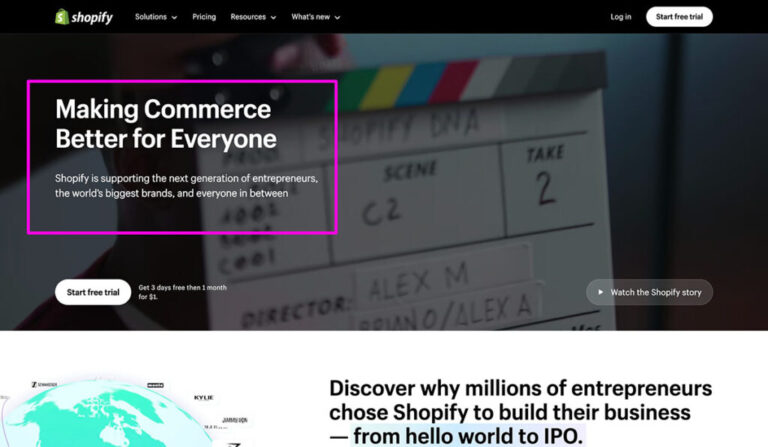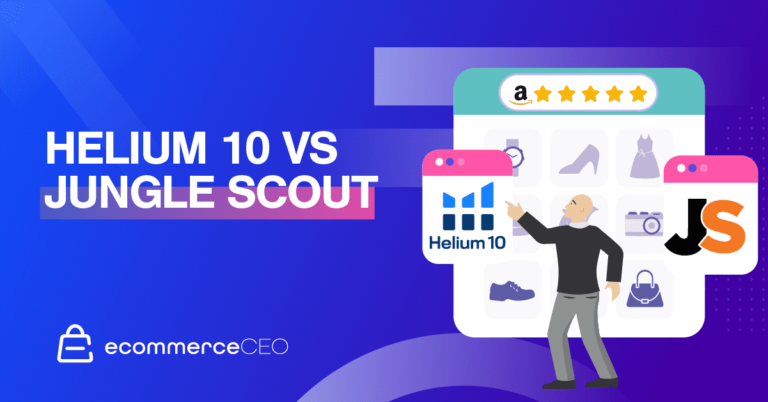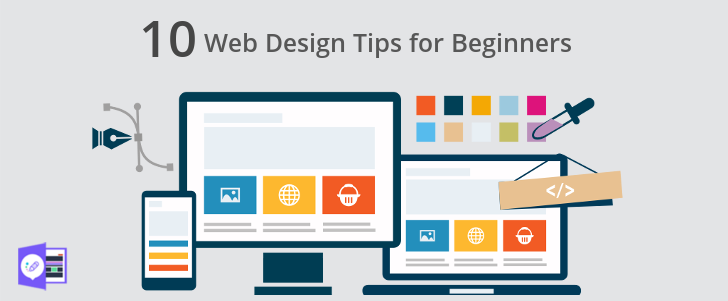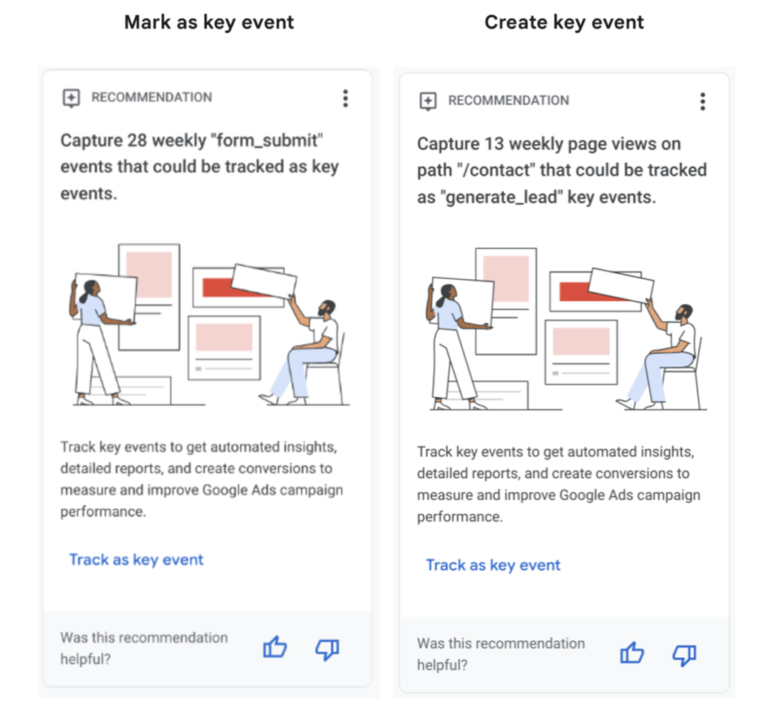Let’s be real for a second—your inbox is probably flooded with promotional emails you’ve never even opened, right?
Well, just like your inbox is flooded, the same goes for your ecommerce customers.
But imagine being able to cut through all that noise and connect with them instantly, right in their pocket or purse…
Enter ecommerce SMS marketing.
SMS is nothing revolutionary, and yet it’s an underutilized powerhouse solution that should be part of your ecommerce business plan (and thus supercharge their sales!).
Think about it—by some reports 55% of SMS are opened and 100% are at least viewed.
Those are some pretty good stats right there!
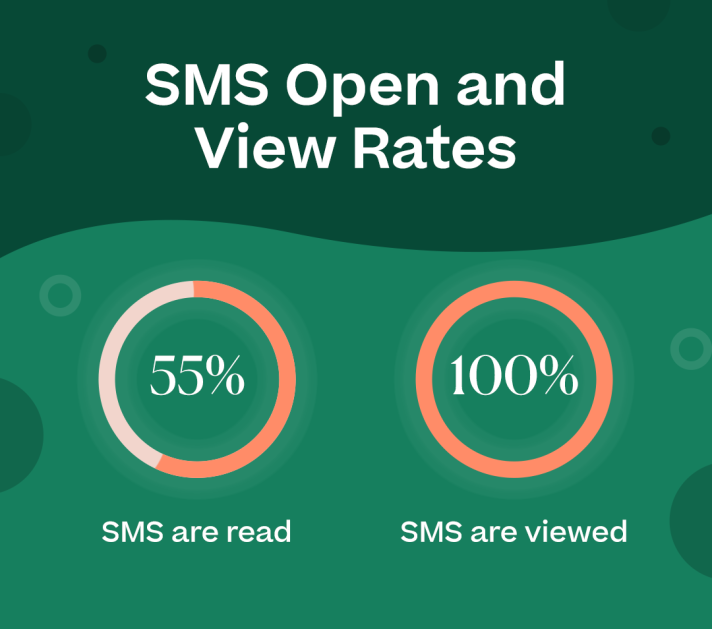
(Note that while you may see stats floating around that SMS has a 98% read rate, those stats are outdated.)
So how can ecommerce brands tap into that SMS power to promote their business and products? Is it a worthwhile investment for you? What can you actually use SMS for? And how can you use SMS without spamming your customers into oblivion?
I’ve been a part of an SMS marketing platform for 10 years and we’ve had thousands of ecommerce owners and marketers use our platform to connect with customers and prospects.
So, I’m going to walk you through the ins and outs of how you can use SMS to supercharge your sales in 2025.
Let’s jump in!
What is ecommerce SMS marketing?
Ecommerce SMS marketing is the process of marketing your ecommerce business or products via SMS.
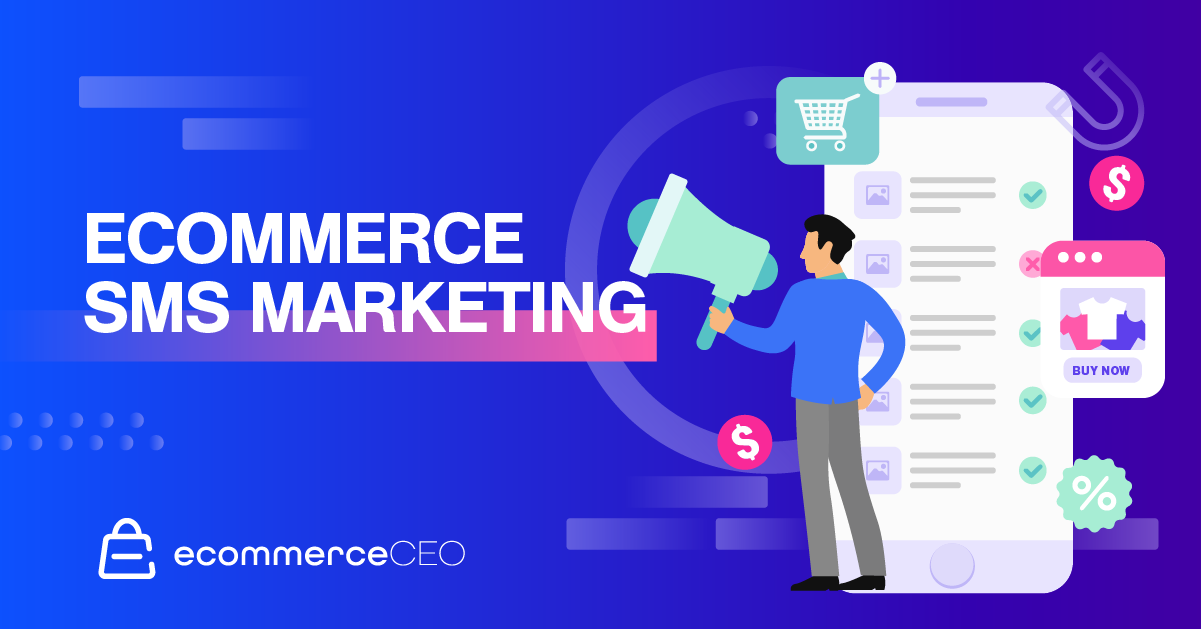
This can come in a variety of forms from sales to abandoned cart notices to more general business promotion.
SMS marketing is typically accomplished through SMS marketing platforms or APIs. It involves a brief and simple process of registering your ecommerce brand with mobile carriers (via your chosen SMS provider). Going through this registration process helps ensure that everything’s in order with the mobile carriers so that they don’t block your messages as spam.
SMS marketing also involves getting opt-in consent from your audience before sending them text messages. SMS platforms give you mechanisms that allow you to easily (even automatically) add contacts to your text subscription list. For example, it may involve your subscribers texting in a particular word to a particular phone number, and their phone number then gets automatically subscribed to your text list.
In order to convince people to opt in to your ecommerce texts, incentives are often offered, such as discounted products or free shipping.
Why use SMS for ecommerce marketing?
There are many reasons to use SMS for marketing—especially for ecommerce.
High read rates / view rates
As mentioned above, SMS have read rates of 55% and “view rates” of up to 100%—unlike, say, emails which are largely ignored or end up in “Promotions.”
What this means is that at the very least, your recipients will see the preview of all the messages you send. So they’ll be aware that you sent them a message and they’ll see the beginning part of the message.
Personability
SMS marketing via an SMS platform or API means that your text messages are getting delivered personally and individually to each recipient—even if you’re sending mass text blasts.
That means that your messages can come across more personably.
SMS platforms even allow you to easily engage in 2-way conversations with an online inbox similar to the email inboxes you’re used to.
Universality
There are almost 7 billion mobile subscriptions worldwide by some accounts. Additionally, people spend an average of 4.5 hours per day on their phones engaged in activities besides calling.
And this is true from teenagers (and even younger) all the way up to older adults. Which means that using SMS as one of your marketing tools helps make sure you have a way to reach a broad range of people in your prospective ecommerce audience.
Immediacy
Not only is SMS widely used, but it provides an avenue of immediacy and urgency—possibly more so than any other marketing channel out there.
That’s because as soon as the text message is delivered to the recipient’s phone, they typically receive a notification right away. And this kind of timeliness can be very important for common ecommerce use cases such as flash sales (more on that below).
Prominence of mobile sales
Mobile ecommerce sales are in the trillions of dollars per year.
In other words, people like to shop on their phones. So it only makes sense to reach them via the channel on which they’re already using to make trillions of dollars’ worth of purchases.
It’s obvious to see that there are many good reasons why you should explore SMS for your own ecommerce marketing efforts.
So we’ve gone over why SMS can be a great way to market your ecommerce business (and therefore supercharge your sales), what about the how? How can you actually use ecommerce SMS marketing?
7 Examples Of Ecommerce SMS Marketing
So let’s get real practical now.
Concrete examples are always helpful. So here are some specific ways (with examples) that you can use SMS marketing to help supercharge your ecommerce sales.
1. Flash Sales
One of the most common use cases ecommerce businesses have for SMS marketing is to promote their flash sales or other time-sensitive initiatives.
You’re likely well aware of the power of flash sales to clear out inventory quickly and get a quick sales boost. So imagine if those flash sales could be communicated directly to people’s phones in a text message—there’s some good potential there to maximize on the flash sale urgency.
EXAMPLE:
🔥 3-Hour Flash Sale! Get 25% off everything with code FLASH25. Hurry, ends at 6 PM CST! Shop now: [Link]
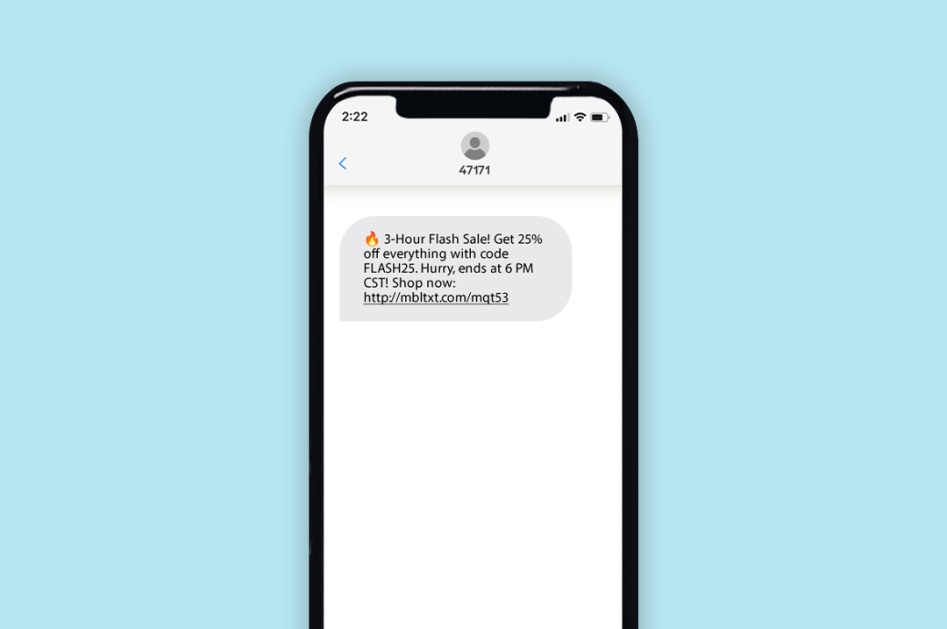
2. Promos
Other than flash sales specifically, SMS is an excellent way to communicate any kind of promo you’re running to help showcase your products.
For example, you likely run holiday promotions. So you can get even more engagement on those holiday opportunities by sending out SMS to complement your other promotion efforts. So instead of your recipients only receiving an email, they could get an email and a text message—which means even more exposure to (and therefore adoption of) your promo.
EXAMPLE:
Hey [Customer Name]! Shh… this is Santa’s little secret—an early Christmas gift for you! Free shipping + free Santa coffee mug on your next order over $25! Use code SANTAFREE at checkout: [Link]
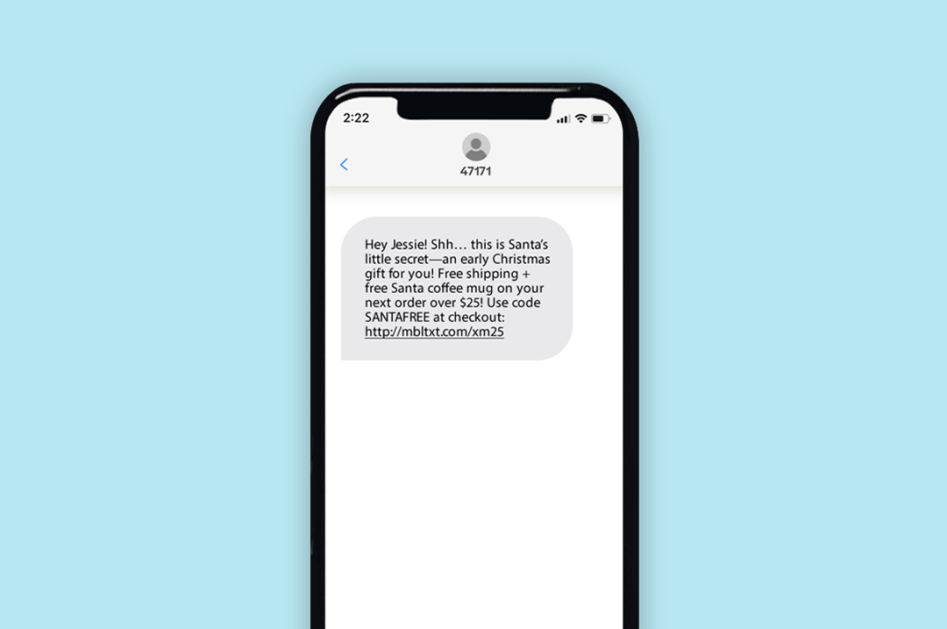
3. Abandoned Cart Notices
These people are so close to converting… They’re at the end of the funnel. They’ve browsed your store. They’ve put the items in their cart.
Yet they leave—often never to return.
But it’s not a lost cause! One way to help recover these almost-sales is by sending a text message with a reminder… and maybe a little incentive to convince them to follow through.
EXAMPLE:
We noticed you left something behind! Complete your order now and get 10% off with code SAVE10: [Link]
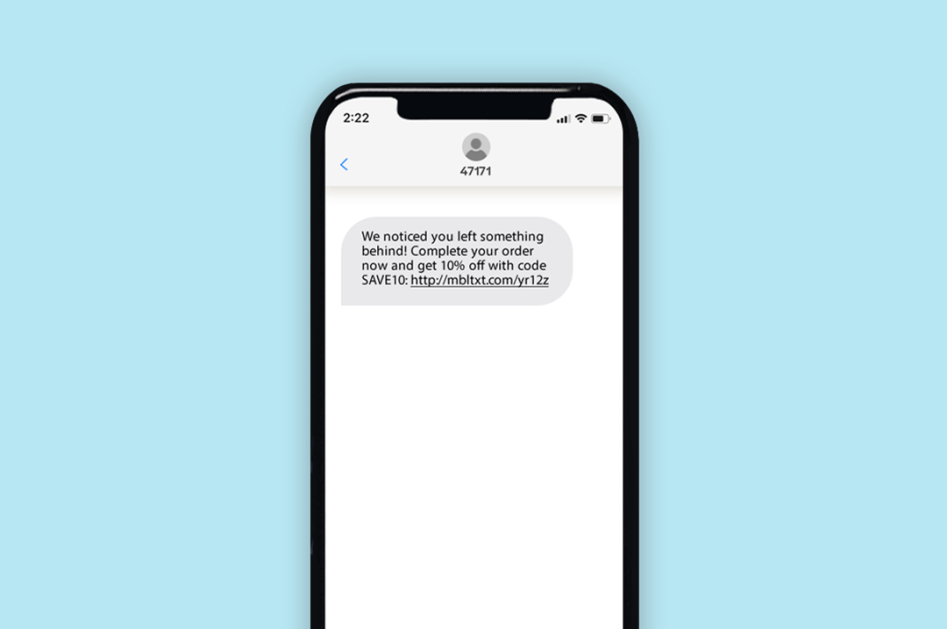
4. Product Launches
Let’s say you’ve got an outstanding new line of products coming out soon.
You’ve worked your tail off planning for these products. You’ve researched what people want and you’ve found some items that you just know are just what your customers need to solve the pain points they’re having or to meet the desires they’re expressing.
So you’re really excited for this launch; you think it’s all but guaranteed to be a success.
The launch comes—-and the results?
Crickets.
Of course, this could be for a variety of reasons, but one of those reasons could simply be that your audience isn’t aware of the launch.
SMS, with its broad reach and immediacy, can be a highly effective way to notify people.
EXAMPLE:
🚨 NEW ARRIVAL! Check out our latest collection before it sells out: [Link]
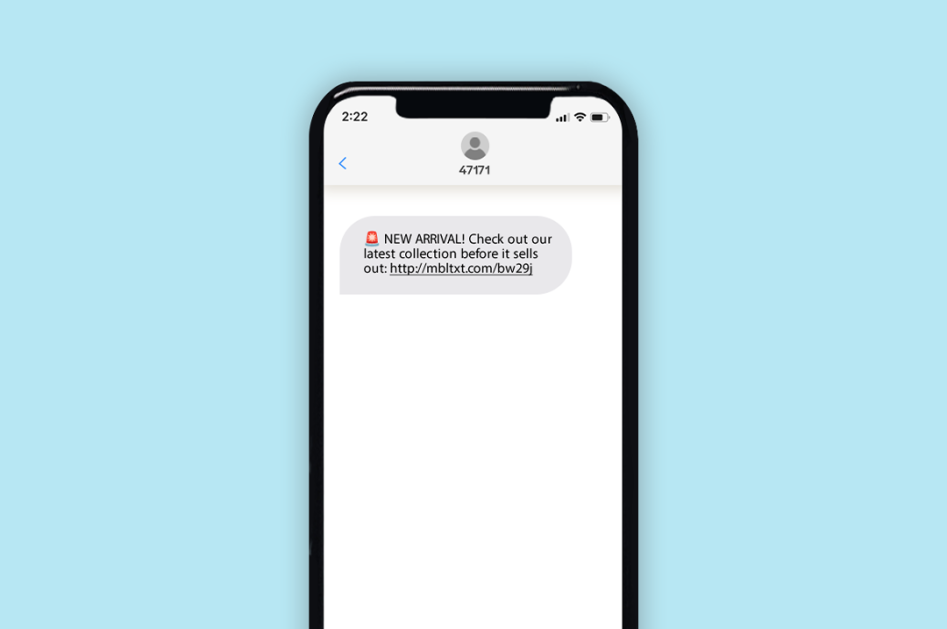
5. Inventory Updates
What do you do when you have high demand and limited stock items? How can you keep customers happy rather than frustrated?
One way is to give them the option of SMS.
If the item they’re wanting is not currently in stock, you can provide customers with the opportunity to get text alert notifications when their item of choice is in stock.
That way, they can be in the know as soon as their desired item is available—and thus you can offer them a valuable service that gives them what they want while also promoting sales for your business.
EXAMPLE:
Back in stock for a limited time! Our popular [Product Name] is available again. Grab yours now: [Link]
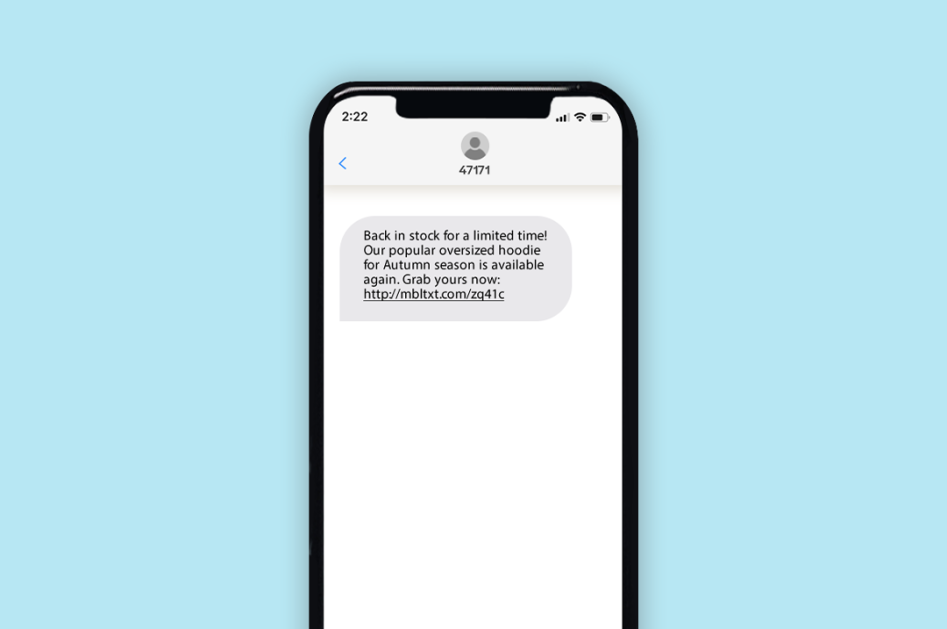
6. Order Confirmations
Although not strictly a marketing use case, another common use case for SMS is for order confirmations.
Order confirmations via SMS provides value to your customers and gets more exposure to your brand in a way that makes sense and is unintrusive.
A simple message reassuring them that their order has been received and is being processed keeps them more informed and therefore helps reduce potential confusion—ultimately leaving your customers with a more satisfying experience.
EXAMPLE:
Thank you for your order, [Customer Name]! We’re processing your order and will notify you when it ships. Track your order here: [Link]
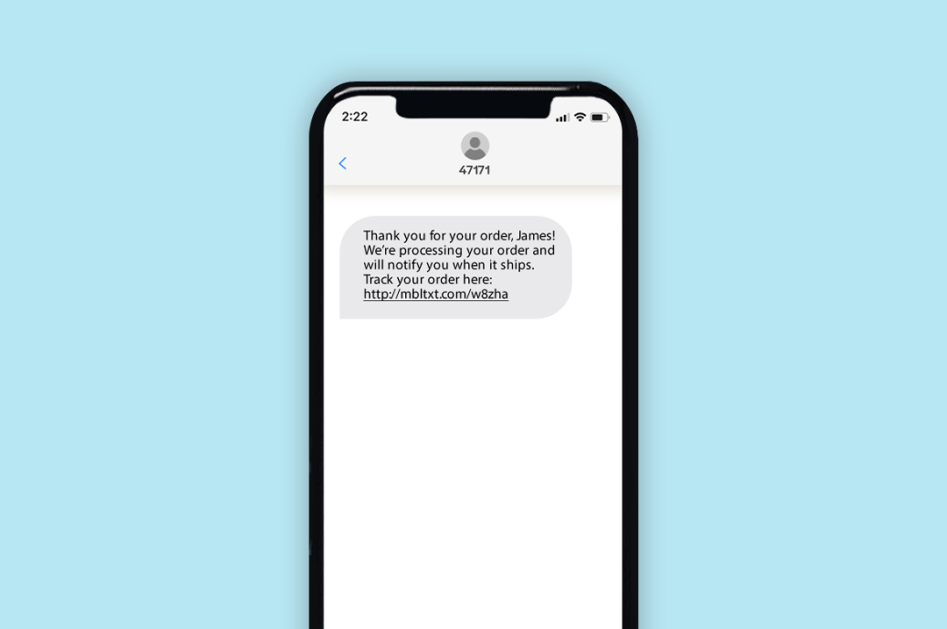
7. Shipping / Delivery Notifications
In addition to order confirmations, customers may appreciate receiving SMS for shipping and delivery notifications.
This kind of proactive communication helps keep your customers in the know so that they’re fully aware of what’s going on.
EXAMPLE:
Great news! Your order is on its way. Estimated delivery: [Date]. Track it here: [Link]
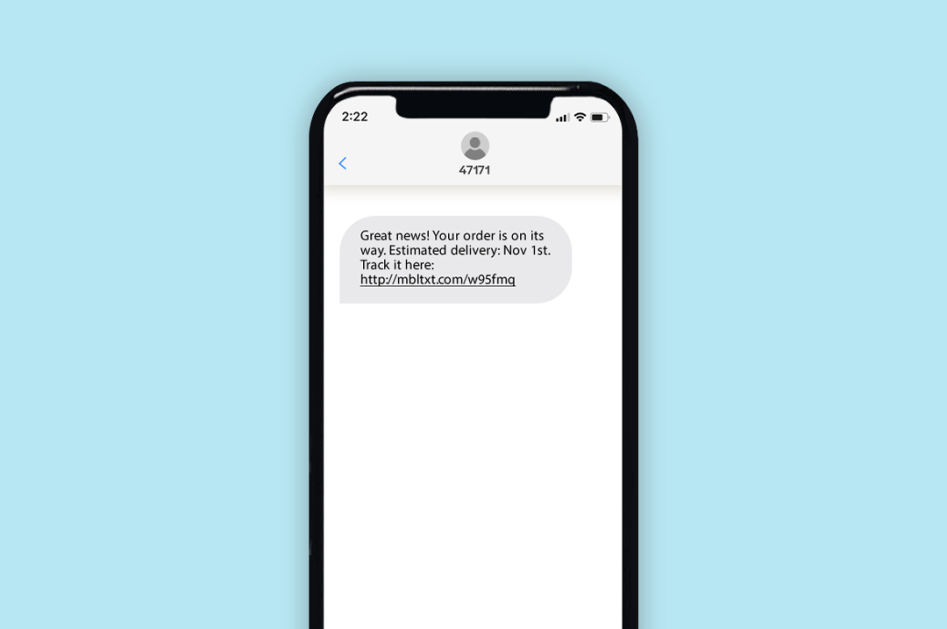
How to Get Started with SMS Marketing
How do you actually get started with SMS marketing? What are the first steps?
I’m so glad you asked!
Here’s what you need to do…
Step 0: Think about how you’d like to use SMS
Step zero is to consider how you’d actually like to use SMS.
Your goals for SMS will make a difference in what platform you decide to use and your other decisions moving forward, so this is a good starting point.
But odds are, if you’ve made it this far into the article, you’ve already been thinking about it this whole time so this “step” may be unnecessary.
Step 1: Find an SMS platform to try
The actual first step is to find an SMS platform and get a free trial.
Most SMS platforms have a free trial that gives you full (or nearly full) access to platform features but limits the number of messages you can send.
So these trials aren’t meant so much to let you try out a full campaign but more to give you an opportunity to try out the features and see how you like the platform itself.
You could try out 2 or 3 SMS platforms and see how they compare.
How to choose an SMS marketing platform
There are so many platforms out there that it can be difficult to sort the good from the “less good.”
But here are a few elements you can look out for.
- Ecommerce-friendliness: It allows for basic functionality such as managing a database of customers, sending text blasts tracking links, and segmenting contacts.
- Good customer support: Support has availability, quick response times, and a willingness to help.
- Appropriate pricing: SMS platform plans usually give you a monthly allotment of messaging credits based on whatever level of subscription you choose—but also be in the lookout for “carrier fees” that are added to those regular subscription costs.
SMS marketing platforms to consider
Some of the SMS platforms out there include:
Step 2: Add subscribers (contacts)
Your next step is to add subscribers into the platform.
You can usually do this via a spreadsheet import or an integration (whether via SMS API or Zapier or a direct integration) with your existing software.
But you can also give people a way to sign themselves up for your text list, either by texting in a particular “keyword,” filling out an online form, or scanning a QR code.
Step 3: Set up your campaigns
If you have contacts loaded into your SMS marketing platform, you can then start setting up your campaigns. (You could do some campaign setup prior to adding contacts as well.)
You can either schedule out campaigns for particular dates and times, or you can create workflows of campaign messages and delays that your recipients will move through.
You can also set up automatically-triggered responses for when your contacts send messages to you.
Step 4: Analyze your results
As your campaigns are being sent to your audience, you can analyze results using built-in reporting tools that you’ll find within your SMS platform.
These reporting tools can give you insights on your messages such as:
- Delivery status
- Response rate
- Click rate for links
- Opt-out rate
From this data, you can make informed decisions to optimize your SMS campaigns.
Best practices and things you need to know for ecommerce SMS marketing
OK, so let’s say you’re interested in picking up SMS marketing for your ecommerce business.
What are some of the best practices and important things you need to know as you pursue it?
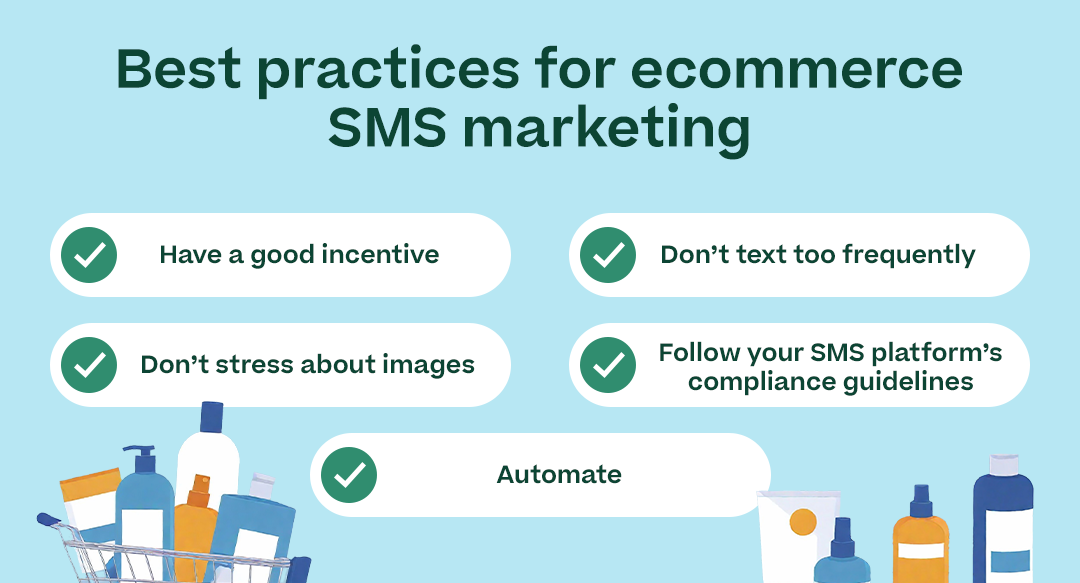
1. Have a good incentive
You’re not going to get many sign-ups to your SMS alerts if you don’t give people a good reason to sign up.
If you just say “Sign up for our text alerts!” but you don’t demonstrate or provide any real value, you probably won’t see great results.
Many businesses offer an immediate, tangible incentive to get people to sign up for text messages there on the spot.
Something like “Free shipping on your next order!” or a free item or a discount can be a good motivator to convince people to give you their cell phone number.
2. Don’t text too frequently
While SMS is a good communication tool, it’s not one that you want to overuse.
People are fine receiving some text messages, but most likely they don’t want to receive multiple text messages from you per week.
I typically recommend 2–4 text messages per month as a good cadence to start with. You can always do some testing to see how your specific audience responds—they may want less or they may even want more.
You just don’t want to use texting so much that it loses its power because people get numb to it like they’ve already gotten numb to email.
3. Don’t stress about images
While many businesses like to include images in their text message marketing, don’t stress about it.
Including images tends to rack up your SMS marketing bill, since it typically costs more to send text messages with images.
Include images in your text messages if you’d like, but you may find that sending plain-text SMS works just as well for you.
4. Follow your SMS platform’s compliance guidelines
SMS marketing compliance isn’t as big of a deal as it used to be from a legal perspective, because some of the legal proceedings have shifted in favor of SMS senders.
However, compliance is still a big deal from the perspective of the mobile carriers. If compliance regulations aren’t followed, the mobile carriers may block your messages from being delivered to the intended recipients.
But your SMS platform should be able to help you navigate any compliance concerns, and most compliance guidelines are fairly straightforward.
The main thing with compliance is to make sure you register your brand with the mobile carriers—your SMS platform should have a mechanism or a form that allows you to submit a registration.
Beyond that, a couple other important items to keep in mind are…
- Mention your brand’s name in every message
- Include opt-out instructions (i.e., “Reply STOP to opt out’) in every message—note that with most SMS platforms, when subscribers reply STOP, they are automatically opted out of your text subscription list
5. Automate
Running an ecommerce business, of course, means juggling a lot of moving parts.
Therefore, anything you can do to free up your time and free up your mental space is a positive thing.
There are a few ways you can automate your ecommerce SMS…
Simple scheduling
The first way to incorporate automation into your SMS marketing is through the simple scheduling of messages.
SMS platforms allow you to schedule the text messages you want to send for specific dates and times—and also to set up recurring messages if you want the same message to go out at regular intervals.
Trigger-based drip campaigns
An SMS drip campaign allows you to create a series of messages and delays in a workflow so that your subscribers can receive those messages automatically. Then you can set up a “trigger” that places those subscribers in that workflow.
For example, if you’re running a product launch campaign, you could have people sign up to receive updates about the launch automatically. Or you could have a trigger-based “single message” workflow, such as for an abandoned cart notice or for a birthday message.
Integrations
Integration between your SMS platform and your other software is sometimes possible via native partnerships offered by specific SMS platforms. More commonly, however, you can use third-party integration apps—most notably Zapier.
With these types of integrations, you’re able to automatically pull in contacts from, say, your ecommerce platform or from your Hubspot form or from your CRM. That way, you can incorporate them into your SMS marketing campaigns.
You can also use these types of integrations to send automated messages based on activity that occurs in those other software—such as when someone fills out a form for a lead magnet on your website.
SMS API
An SMS API is the best and most flexible integration option, but it requires development manpower.
With an SMS API, your developers follow the SMS platform’s API documentation in order to program SMS campaigns the specific way that you want them to be.
An SMS API will therefore allow you to actually create and customize the integrations you’re looking for.
Ecommerce SMS marketing FAQ
Here are a few other answers to questions you may have regarding SMS for e-commerce.
Take that first step…
Breathe in. Breathe out. Because that was a lot!
We just walked through the in’s and out’s of ecommerce SMS marketing and how it can supercharge your sales.
So now what?
Well, your first step is to select an SMS platform or 2 to try out and see how you like them.
Pretty soon you’ll get the hang of SMS—and you just might wonder what your business ever did without it.
